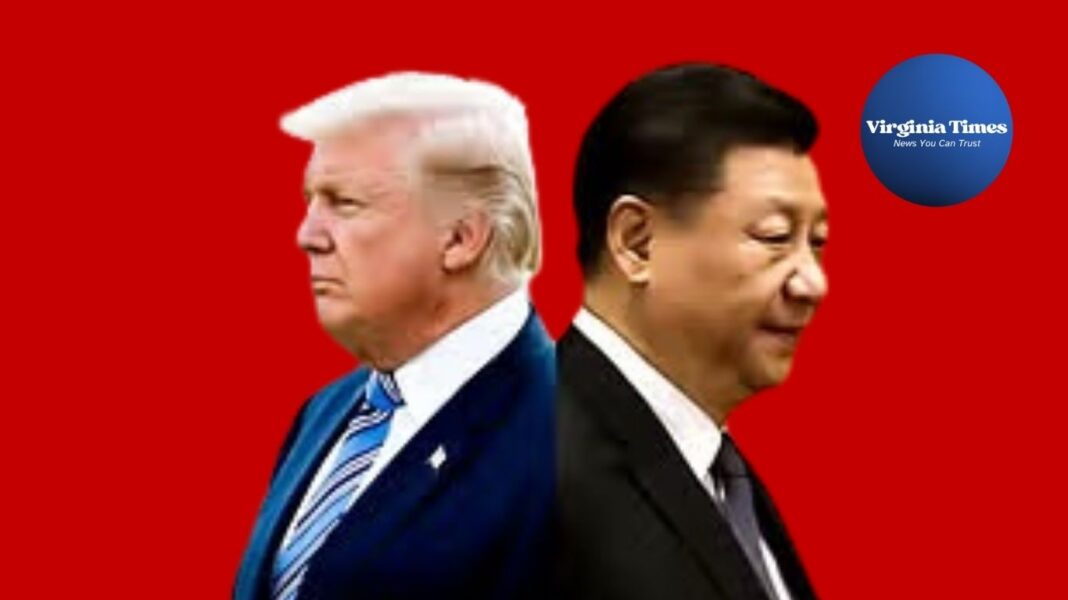In a dramatic escalation of tensions between the world’s two largest economies, President Donald Trump has followed through on his threat to impose a sweeping 104% tariff on all Chinese imports, effective as of 12:01 a.m. ET Tuesday, 9 April 2025. The move came after Beijing failed to comply with a White House ultimatum to roll back its retaliatory 34% tariffs on U.S. goods by noon on April 8. Trump responded by adding an additional 50% duty, atop previously existing tariffs.
The measure, announced late Monday and confirmed Tuesday by White House Press Secretary Karoline Leavitt, marks a sharp intensification of a trade war that is already rippling through global markets. The new tariff structure reflects an accumulation of earlier hikes, including a 20% base levy introduced earlier in 2025, followed by a 34% retaliatory matching rate—culminating in the 104% figure.
The White House has described the tariffs as “reciprocal.” In remarks Tuesday, Trump claimed, “China wants to make a deal, badly, but they don’t know how to get it started.” Speaking at a Republican fundraising dinner in Washington later that night, he asserted that the tariffs were already bringing in ”$2 billion a day” for the U.S.—though he did not provide specifics to support the figure.
Beijing has responded with strong resistance. Chinese Foreign Ministry spokesperson Lin Jian called the U.S. tariffs “indiscriminate” and vowed to “fight to the end” to protect Chinese interests. State media outlets even revived a 1987 Ronald Reagan speech warning against retaliatory trade policies—a symbolic rebuke of Trump’s aggressive stance.
While no new retaliatory steps were officially announced by early Wednesday, China’s 34% tariff on all U.S. imports is scheduled to take effect on April 10. Analysts speculate that further countermeasures could include bans on U.S. agricultural exports or American entertainment content.
The economic reaction was swift and severe. Global markets tumbled as the tariffs took effect. On Wall Street, the S&P 500 dropped 1.6% after briefly surging earlier in the day. Brent crude oil prices fell to $62.74 per barrel, their lowest since February 2021, amid rising fears of a global recession. The U.S. dollar strengthened, while companies with Chinese supply chain dependencies scrambled to adapt—some halting shipments altogether.
The tariffs are not limited to China. The Trump administration has reportedly targeted nearly 90 countries, with rates ranging from 20% on the European Union to 49% on Cambodia. However, China—the world’s largest exporter—remains the primary focus, with the full 104% tariff applying to products ranging from consumer electronics to textiles.
Economists warn that American consumers may ultimately bear the cost. During Trump’s first term, similar tariffs were largely passed along to U.S. buyers in the form of higher prices.
Despite the economic strain, President Trump remains firm, describing the tariffs as leverage in ongoing global trade negotiations. “Nations are coming a long way to do deals,” he said Tuesday, referencing recent delegations from Japan and South Korea.
American Trade Representative Jamieson Greer echoed the president’s optimism during a Senate Finance Committee hearing, stating that over 50 countries have initiated trade talks with Washington, though no timeline has been announced for potential agreements.
Not all voices in Washington are aligned. Senate Majority Leader John Thune (R-S.D.) expressed caution, warning against the use of broad tariffs while acknowledging Trump’s electoral mandate. Meanwhile, U.S. Treasury Secretary Scott Bessent called the trade escalation “a big mistake,” arguing it could isolate allies and increase market volatility.
The impact is already being felt on the ground. Healthcare firms are cutting budgets, while consumer goods like sneakers are expected to rise in price.
As this high-stakes standoff unfolds, the global economy is left holding its breath. Trump’s gamble—fueled by his belief that “I know what the hell I’m doing”—could permanently reshape global trade. But the cost of that reshaping remains uncertain, with both Washington and Beijing entrenched, and the world watching from the sidelines.
(With inputs from agencies)
A global media for the latest news, entertainment, music fashion, and more.





